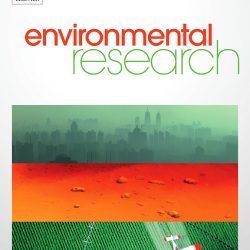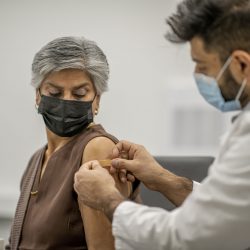Investigation of the impact of commonly used medications on the oral microbiome of individuals living without major chronic conditions
Authors: Vanessa DeClercq, Jacob T. Nearing, and Morgan G.I. Langille Journal: PLOS One Abstract Background: Commonly used medications produce changes in the gut microbiota, however, the impact of these medications on the composition of the oral microbiota is understudied. Methods: Saliva samples were obtained from 846 females and 368 males aged 35-69 years from a Canadian population cohort, the Atlantic Partnership for Tomorrow’s Health (PATH). Samples were analyzed by 16S rRNA gene sequencing and differences in microbial community compositions between nonusers, single-, and multi-drug users as well as the 3 most commonly used medications (thyroid hormones, statins, and proton pump inhibitors (PPI)) were examined. Results: Twenty-six percent of participants were taking 1 medication and 21% were reported taking 2 or more medications. Alpha diversity indices of Shannon diversity, Evenness, Richness, and Faith’s phylogenetic diversity were similar among groups, likewise beta diversity as measured by Bray-Curtis dissimilarity (R2 = 0.0029, P = 0.053) and weighted UniFrac distances (R2 = 0.0028, P = 0.161) were non-significant although close to our alpha value threshold (P = 0.05). After controlling for covariates (sex, age, BMI), six genera (Saprospiraceae uncultured, Bacillus, Johnsonella, Actinobacillus, Stenotrophomonas, and Mycoplasma) were significantly different from non-medication users. Thyroid hormones, HMG-CoA reductase inhibitors (statins) and PPI were the most reported medications. Shannon diversity differed significantly among those taking no medication and those taking only thyroid hormones, however, there were no significant difference in other measures of alpha- or beta diversity with single thyroid hormone, statin, or PPI use. Compared to participants taking no medications, the relative abundance of eight genera differed significantly in participants taking thyroid hormones, six genera differed in participants taking statins, and no significant differences were observed with participants taking PPI. Conclusion: The results from this study show negligible effect of commonly used medications on microbial diversity and small differences in the relative abundance of specific taxa, suggesting a minimal influence of commonly used medication on the salivary microbiome of individuals living without major chronic conditions. Doi 10.1371/journal.pone.0261032 Last Updated on December 13, 2021



